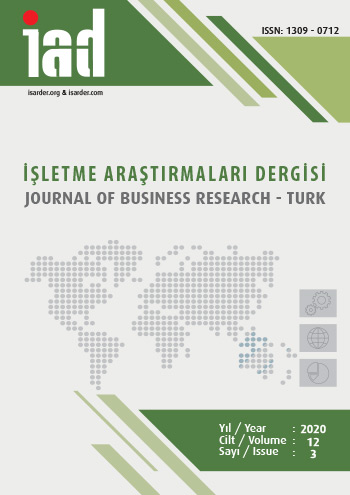Geleneksel Performans Değerlendirme Ölçütlerinin Ekonomik Katma Değere Etkisi: Bilişim Endeksi Uygulaması (XBLSM)
The Effect of Traditional Performance Evaluation Criteria on the Market Value Added: Application on Informatics Index (XBLSM)
Author(s): İlker CalayoğluSubject(s): Business Economy / Management, Marketing / Advertising, ICT Information and Communications Technologies
Published by: Orhan Sağçolak
Keywords: Traditional Performance Evaluation Criteria; Economic Value Added (EVA); BIST Informatics Index;
Summary/Abstract: Purpose – To analyze the power of traditional performance evaluation methods to explain the Economic Value Added (EVA). Design/methodology/approach – In this study, fiscal data of companies in the BIST Informatics Index which is period between 2008-2017 years were analyzed. In the analysis the following ratios were used as traditional performance evaluation criteria: Return on assets, return on equity, earnings per share, price to earnings ratio, market to book value ratio and return on sales rate. The companies in the BIST Informatics Index are divided into sub-sectors according to by field of activity. These sub-sectors are software, communication and hardware marketing. Regression analysis and auto correlation tests were used and standard deviation was calculated. All transactions were done with IBM SPSS Statistics 26. Findings – In this study, models that explain the EVA with the most meaningful results were calculated. As a result of the research, the software sub-sector can be explained by 71.2% with the model consisting of return on assets and return on equity. The hardware marketing sub-sector can be explained by 57.8% with the model consisting of earnings per share. Communication sub-sector can be explained by 52.6% with the model consisting of equity profitability ratio and return on sales. It has been calculated that the standard deviation of the 10-year EVA values of companies in the software sub-sector is lower than that of other sub-sector companies. Discussion – Analyzing the companies in the BIST Informatics Index by analyzing them according to their fields of activity has yielded different results due to the dynamics of their fields of activity. The sub-sector software, which can be explained at the highest rate with traditional performance evaluation criteria, was software. This situation is thought to be some of the sectorial features. The lower standard deviations of software companies mean that the software industry produces more stable EVA. Investors cannot deal with complex calculations with the EVA estimation model, but can come to the conclusion with calculations that require simpler transactions. Decision processes can speed up.
Journal: İşletme Araştırmaları Dergisi
- Issue Year: 12/2020
- Issue No: 3
- Page Range: 2543-2555
- Page Count: 13
- Language: Turkish

